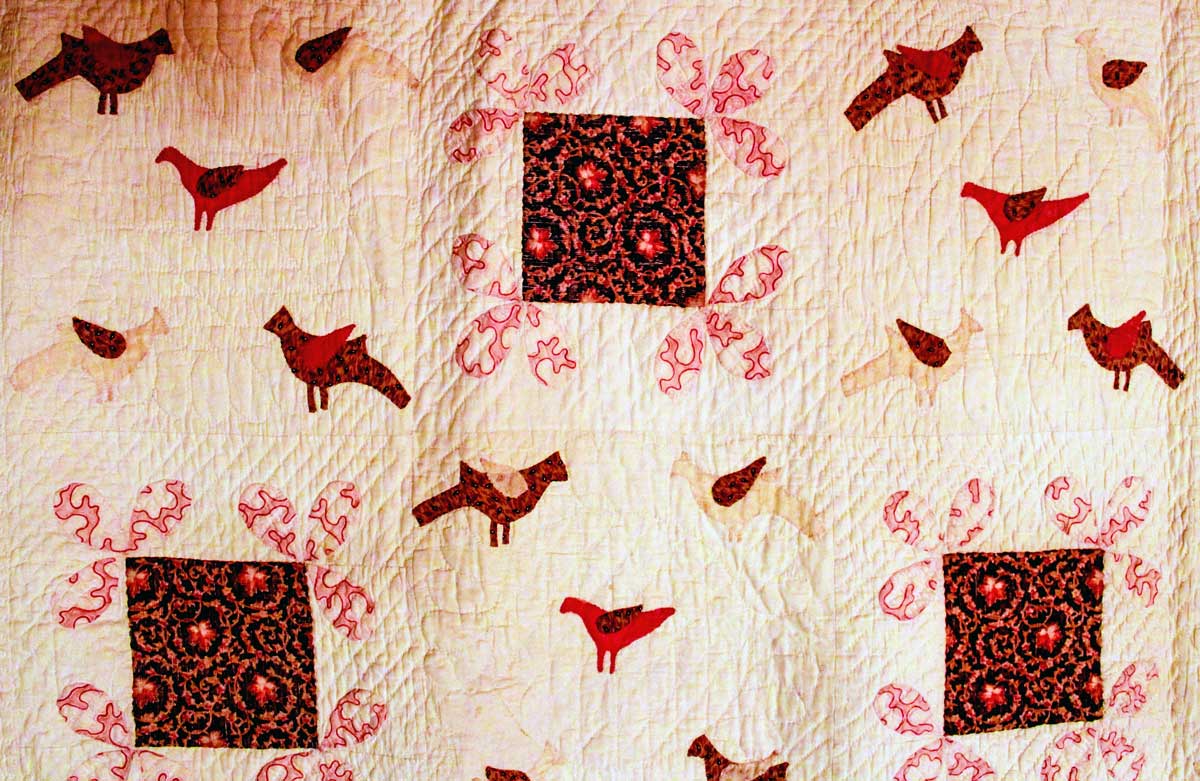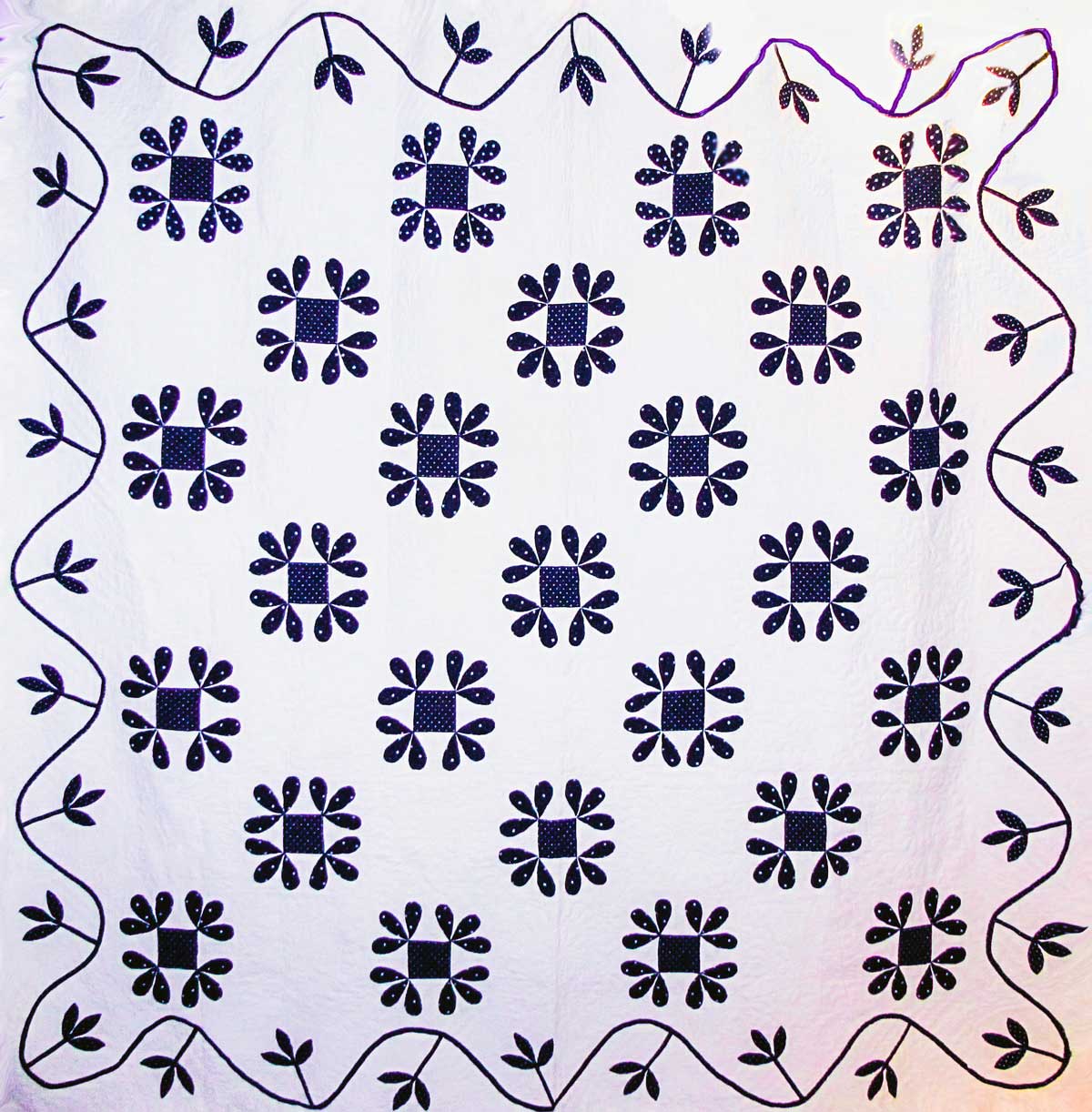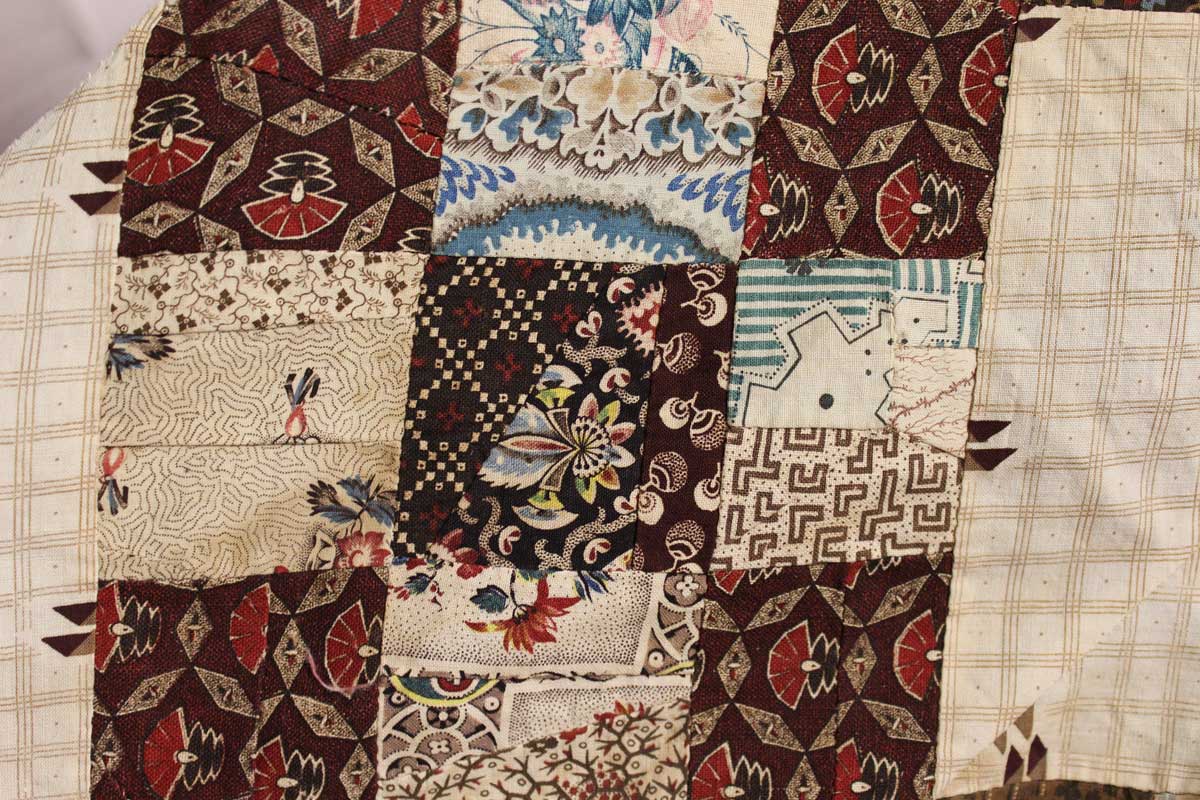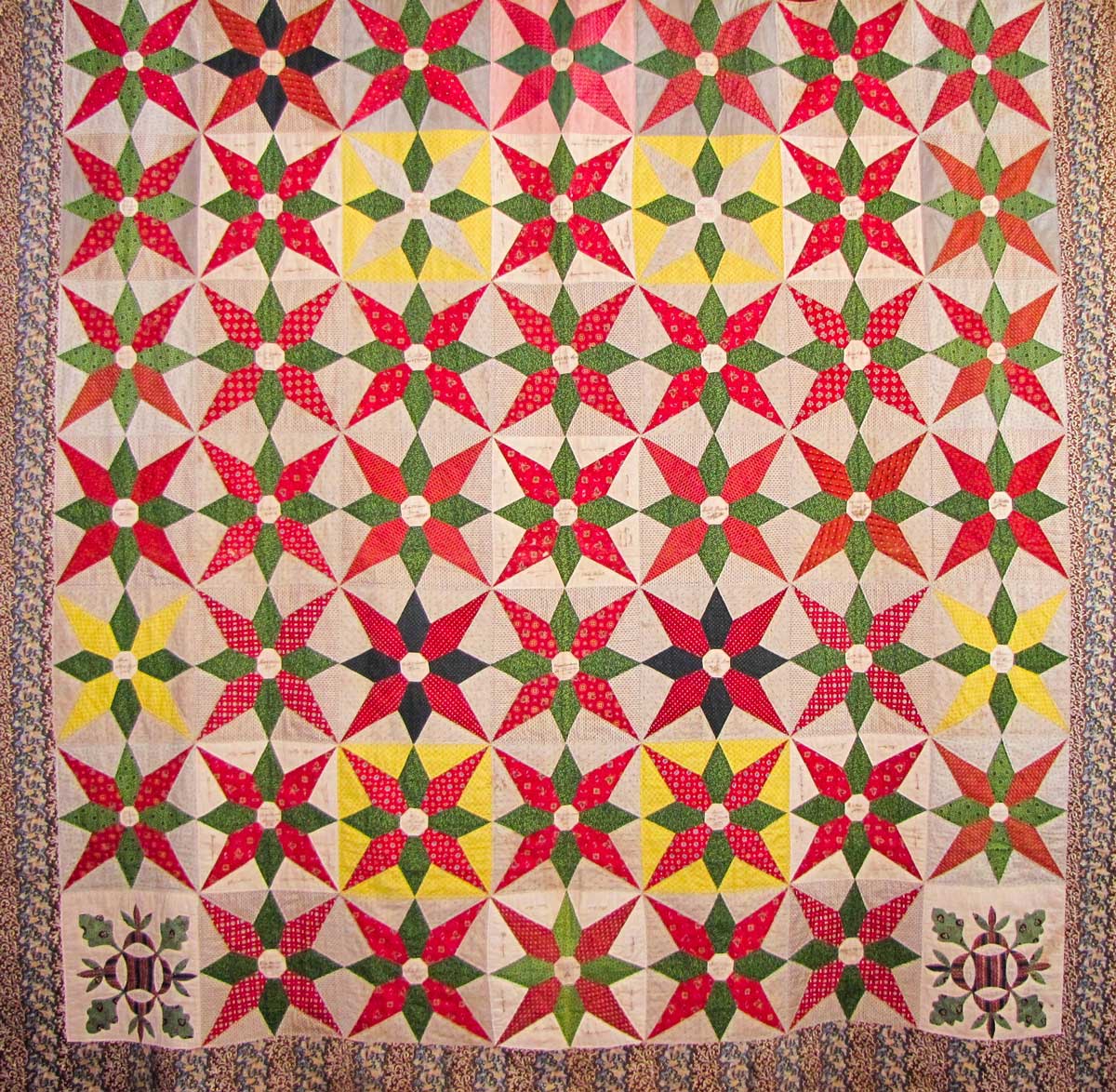Divine inspiration: Bible stories depicted in quilts
November 2025
Covering Quilts
Divine inspiration: Bible stories depicted in quilts
by Sandra Starley
For decades, the Bible has been an inspiration for quilters who depicted stories from its pages in cloth. Among them – the Song of Solomon’s Rose of Sharon, King David’s crown, the guiding Star of Bethlehem, as well as many other Bible inspired blocks. In the 1800s, the Bible was one of the few books accessible to quilters across all societal levels, so it’s not surprising that it sparked many quilted creations.
Harriet Powers’ Bible Quilts
One of the most famous and unique Bible quilts from the 1800s is the “Bible Quilt” made by Harriet Powers (1837-1910) in about 1886 and exhibited by her at a grand fair in Georgia that year. Harriet was born into slavery in Georgia and would never have imagined in her wildest dreams that her work would eventually be housed in the Smithsonian (National Museum of American History) in Washington, D.C. She used a whimsical, folk-art style to depict appliqued human and animal images from both the Old and New Testament. She described her quilt as showing “Adam and Eve in the Garden of Eden, a continuance of Paradise with Eve and a son, Satan amidst the seven stars, Cain killing his brother Abel, Cain goes into the land of Nod to get a wife, Jacob’s dream, the baptism of Christ, the crucifixion, Judas Iscariot and the 30 pieces of silver, the Last Supper, and the Holy Family.”
Harriet also created a second appliqued folk art Bible quilt referred to as her pictorial quilt which is in the Museum of Fine Arts in Boston, MA. Collecting note: a Smithsonian licensee reproduced Harriet’s Bible Quilt in China in the 1990s, and with a bit of searching you too can own your own replica Bible Quilt. If you want to learn more about Harriet and her quilts, pick up a copy of Kyra Hicks’ This I Accomplish.
Ruby McKim’s Bible History Quilt
The Bible continued to inspire quilters into the 1900s, and it clearly guided early quilt entrepreneur Ruby McKim to develop a 24-block embroidered quilt pattern named the “Bible History Quilt.” First published in 1927 in The Kansas City Star newspaper and other publications as a special weekly feature printed in the Sunday edition. A simple outline embroidery pattern (line drawing) was published each week.
The quilter had to get all 24 editions to complete the quilt. The series depicts an assortment of Bible stories, including the well-known and easy to decipher, such as: Adam and Eve (“Father Adam” and “Mother Eve”), Noah’s Ark (“The Ark”), and Baby Moses in the Bulrushes (“Moses adopted by Pharoah’s Daughter”). Also shown are more obscure stories that may send you back to the Bible, Sunday School, or at least to Google. These include a man being fed by birds (the prophet “Elijah and the Ravens”), a man releasing water from a rock (Moses and “The Rock of Living Water”), two men carrying large fruit on a pole (“The Spies”), and a man with a piece of fabric or a pelt (“Gideon and the Fleece”).

Harriet Powers’ Bible Stories Quilt. Image courtesy of the Smithsonian National Museum of American History
All the blocks are from the Old Testament, which causes one to wonder if Mrs. McKim planned to do a second Bible History quilt featuring images from the second half of the Bible, the New Testament.
If you are now feeling inspired to create your own Bible story quilt and wish you had a pattern, you are in luck. Ruby McKim’s granddaughter Merrily McKim Tuohey is offering the Bible History pattern, as well as many other wonderful McKim quilt patterns and books, at her website, www.mckimstudios.com.
Sandra Starley is nationally certified quilt appraiser, quilt historian, and avid antique quilt collector. She travels throughout the U.S. presenting talks on antique quilt history, fabric dating classes and trunk shows as well as quilting classes. Learn more at utahquiltappraiser.blogspot.com. Send your comments and quilt questions to SandraStarley@outlook.com






